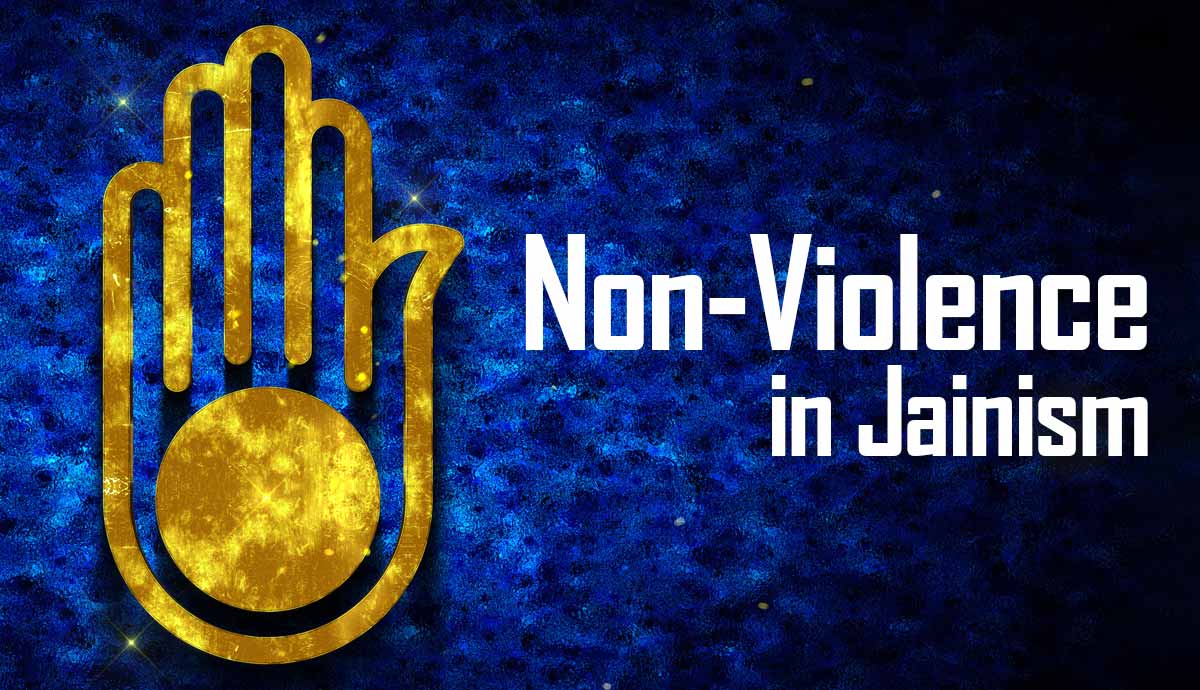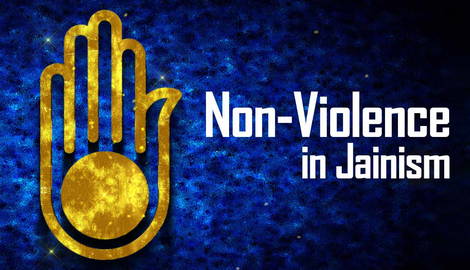
Non-violence, or ahimsa, gained global prominence with Indian freedom fighter Mahatma Gandhi. He employed it in his struggle against colonialists. However, Jains had been advocating for ahimsa for centuries. The religion believes in loving every animistic form, be it animals, plants, water, or even air. Ahimsa calls for obeying a strict code.
Jains are uncompromising in not harming others in order to accumulate good karma, from following vegetarian dietary restrictions to avoiding the consumption of root vegetables like onions, which are ananthkay (a single body with infinite souls or lives).
A Way of Living

Ahimsa means not harming any being with a soul and it is central to the Jains’ lifestyle choices. Apart from ascetics who follow non-violence via established religious practices, ordinary Jains also apply it to daily social situations. It is an ethical attainment and the opportunity to achieve salvation. It releases Jains from the cycle of life and death, and unending rebirths. The spiritual goal is to be connected with the creator after one’s demise.
In his ethnography, Jain Traditions, Lay Activists, And Service-Oriented Nuns published in 2014, Evan Brett introduces the readers to Akash, a generational Jain devotee, and his family’s need for government-appointed security details to avoid retribution from animal trafficking goons. Akash’s mother was a famous animal welfare activist who constantly got into physical disagreements with animal-trading racketeers. She was tragically killed by the thugs as a warning to all activists in the city of Ahmedabad, Gujarat. Akash’s mother is one example among thousands of Jains across India. They are extremely dedicated to this cause, to the extent that they will fight for the lives of animals—whom Jainism considers voiceless—at the expense of their own.
Non-Violence in Jain Doctrines

The norms for non-violence in Jainism are divided into two classifications. Absolute conduct (Sakala charithra) is followed by ascetics, whereas the common practitioners of Jainism focus on a restricted amount of pacifism (Vikala charithra). The two segments of the religion satisfy their commitment at differing levels. Each Jain must exercise self-detachment.
There also exists a misconception that exercising ahimsa and detachment is a form of self-interest. The collection of positive karma through kindness can seem personally motivated to accomplish salvation. Hence, many Jains have criticized Mahatma Gandhi’s definition of non-violence, namely satyagraha (civil disobedience), as passive violence. The true meaning of ahimsa, as any Jain will identify, lies in a deep understanding of the reciprocity of life.
Ahimsa in the Everyday Matters of Common Jains

Householder Jains partially follow ahimsa based on their responsibilities, obligations, and personal circumstances. In Jainism, there are four types of himsa (violence) that any ordinary man should evade: industrial, domestic, protective, and intentional injuries.
Jain doctrines agree that virodhi himsa (defensive injury) carried in self-defense for one’s own safety is sometimes regrettably unavoidable. What lay Jains can do is minimize intentional injuries to beings having more than one sense. Therefore, Jains should refrain from working in jobs or industries that enable brutality. This includes not handling furnaces, selling pesticides or weapons, trading animal-based products (eggs, meat, etc.), and laboring in zoos or circuses. Jains should also steer clear of causing injuries while cleaning, performing domestic chores in the kitchen or building a house.
Jain Monks and Nuns

Ordinary Jains achieve ahimsa partially but ascetics observe complete pacifism and the renunciation of cruelty. Jain monks and nuns shun violence in a nine-fold manner and follow their vow of ahimsa to the fullest extent. They do this via mind, body, and speech in addition to acting through any agent. Yes, even self-preservation is frowned upon.
Jainism also disapproves of wine consumption. Wine lowers the inhibitions of the drinker and allows them to commit violence without hesitation. Not consuming honey taken from bees or fruits which serve as breeding grounds for other organisms, is also included in the observation of ahimsa.
More Than a Vegetarian Diet

Jainism aims to limit personal violence as much as possible. Similar to the concept of halal in Islam which encourages only eating the meat of organisms killed with mercy and no pain, ahimsa in Jainism supports sinless consumption of other living things.
Jains are herbivores, that too of a distinct type (lacto-vegetarianism). If humans uproot plants with bodies resting in the soil, they might also kill the insects that live around them. Jain beliefs promote the idea that the act of consumption conducted for self-satisfaction should not harm any other creature.
Importance of Ecology

With modernization, the relationship of humans with nature has changed. Once, it was based on cosmological connections and assigning sacredness. Now, it focuses on personal gain, placing humans at the center of the universe.
However, in Jainism, existence is conditional. It is intertwined with other inhabitants of the world. It would be foolish to not recognize one’s dependence on others and honor it.
Ahimsa is Not Regulation

Ahimsa in Jainism does not translate to “do not participate in… [this or that].” It is an inspired way to offer your soul liberation as you take on the role of protector of every being. For an ascetic, who follows it to a T, it means walking slowly or clearing the path in front of them before walking to avoid trampling minute organisms in their way.
There are some guidelines for practicing non-violence while performing daily duties. Nonetheless, Jains do not recognize them as reprimands, forcing negativity onto daily decisions. Rather, it is an opportunity to incorporate forgiveness, kindness, and altruistic giving into one’s lifestyle.
Bibliography
Evans, B. (2014). Jain Traditions, Lay Activists, and Service-Oriented Nuns. Journal of Theta Alpha Kappa, 38(1), 57–74.
Meynell, L. & Paron, C. (2023). Applied Ethics Primer. Atlantic Canada Pressbooks Network. https://caul-cbua.pressbooks.pub/aep.
Gandhi, S. J. (2012). The Jain Principle of Ahimsa (Nonviolence) and Ecology. Institute of Oriental Philosophy. http://www.iop.or.jp/Documents/1323/Sohan%20Lal%20Jain%20Gandhi.pdf
Kara, Y., & Saroğlu, H. (2021). Reflections of Deep Ecology Approach in the Ahimsa Doctrine. Gaziantep University Journal of Social Sciences, 20(2), 362–371. https://doi.org/10.21547/jss.832444
Zydenbos, R. J., Houben, J., & van Kooij, K. (1999). Jainism as the Religion of Non-violence. Violence Denied: Violence, Non-Violence, and the Rationalization of Violence in South Asian Cultural History, 185-210. https://www.google.co.in/books/edition/_/6znfIA3UfWcC?hl=en&gbpv=1&kptab=overview








